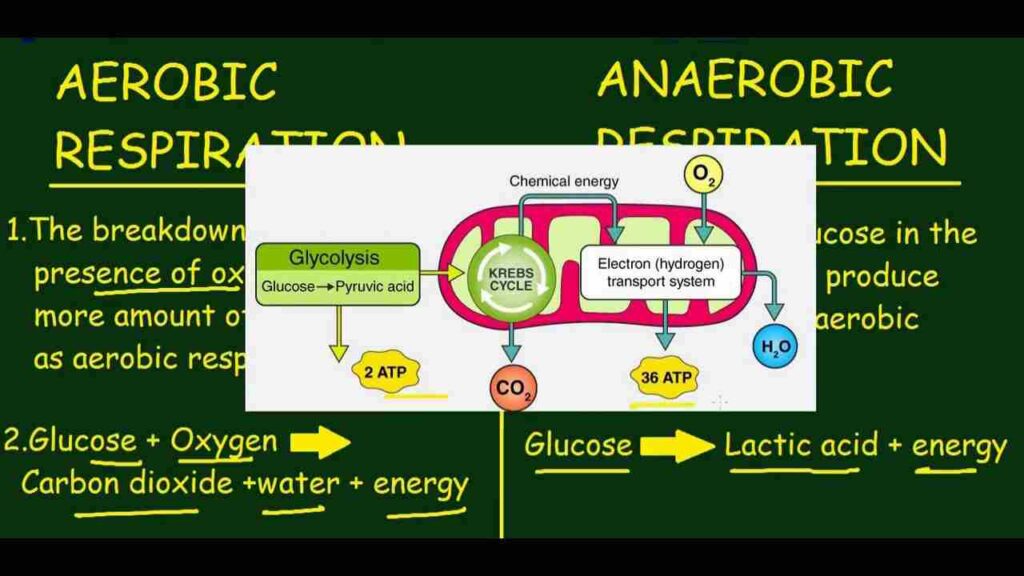
12 Key Difference between Aerobic and Anaerobic Respiration class 10
Welcome to the fascinating world of respiration! In this article, we’ll explore 12 Key Difference between Aerobic and Anaerobic Respiration for class 10, shedding light on how living organisms obtain energy in distinct ways. Let’s dive in!
Difference between Aerobic and Anaerobic Respiration class 10
Aerobic and anaerobic respiration are two distinct metabolic processes that occur in living organisms. While they both involve the breakdown of organic molecules to produce energy, they differ in various aspects. Here are 12 Key Difference between Aerobic and Anaerobic Respiration for class 10:
Oxygen Requirement: Aerobic respiration needs oxygen to continue, whereas anaerobic respiration is not dependent on oxygen and can take place without it.
Energy Yield: When compared to anaerobic respiration, aerobic respiration produces a significantly higher amount of energy (ATP). This results from aerobic respiration’s complete oxidation of glucose.
End Products: Carbon dioxide and water are the end products of aerobic respiration. On the other hand, depending on the organism, anaerobic respiration generates various end products, such as lactic acid or ethanol.
Efficiency: In terms of producing energy from a given amount of substrate, aerobic respiration is more effective. Anaerobic respiration is less effective and produces comparatively less ATP.
Duration: Because aerobic respiration uses the oxygen that is already present effectively, it can sustain energy production for longer periods of time. When oxygen levels are low, anaerobic respiration is typically a temporary solution.
Oxygen Debt: Anaerobic respiration can cause organisms to run low on oxygen. The oxygen required to break down lactic acid buildup or other byproducts of anaerobic respiration is referred to as this debt.
Occurrence: Aerobic respiration happens in a variety of organisms, including people, animals, and the majority of bacteria. In many microorganisms, some bacteria, and some animal tissues, anaerobic respiration occurs.
Mitochondrial Involvement: Aerobic respiration, which makes use of the electron transport chain, primarily occurs inside the mitochondria of cells. The mitochondria are not involved in anaerobic respiration.
Oxygen Toxicity: As a byproduct of aerobic respiration, harmful reactive oxygen species have the potential to be produced, which could result in oxidative stress. This problem is avoided by anaerobic respiration because oxygen is not used.
Exercise Intensity: Because aerobic respiration is most effective at supplying the increased demand for energy, it predominates during low to moderate intensity exercise. High-intensity activities increase the prominence of anaerobic respiration.
Muscle Fatigue: Lactic acid fermentation in particular, a byproduct of anaerobic respiration, can contribute to both muscle fatigue and the burning sensation felt during vigorous exercise. This result is not a result of aerobic respiration.
Examples include the Krebs cycle and oxidative phosphorylation, which both involve aerobic respiration. Fermentation processes like lactic acid fermentation in muscle cells and alcoholic fermentation in yeast are examples of anaerobic respiration.
Anaerobic and aerobic respiration are two different ways that organisms can make energy, and understanding the differences between them can be very helpful. These processes, whether it be the long-term effectiveness of aerobic respiration or the brief reliance on anaerobic pathways, contribute to the astounding adaptability of life on our planet.
Also Read: Understand what is the difference between a Mountain and a Plateau